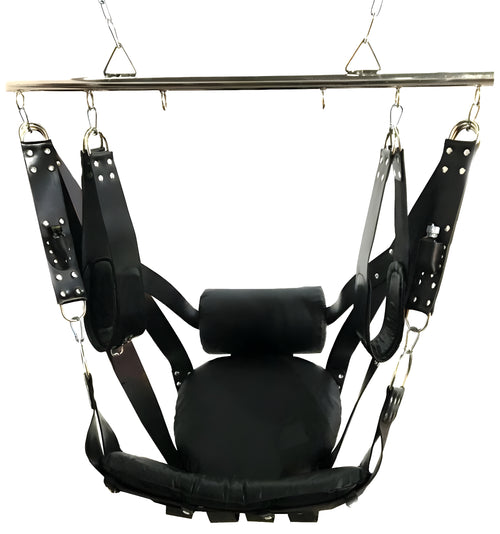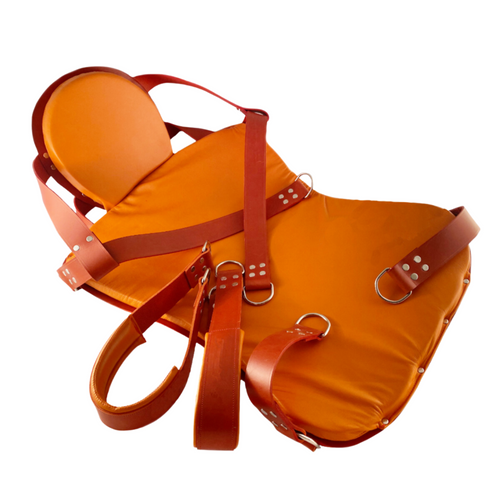Fetish vs. Kink: What’s the Difference? (2025 Guide)
Short answer: a kink is an unconventional interest or activity that can enhance arousal; a fetish is a specific focus (often a body part, material, or object) that may be central to arousal for some people. Most people with atypical interests are healthy and well-adjusted; it only becomes a disorder if it causes significant distress or impairment. HealthlineAmerican Psychiatric Association
TL;DR
-
Kink = umbrella of non-vanilla activities (e.g., bondage, roleplay, sensation play).
-
Fetish = specific fixation (e.g., leather, latex, feet) that can be especially salient for arousal.
-
Not pathology: DSM-5 clarifies that atypical interests ≠ mental disorder unless there’s distress/impairment or non-consent. American Psychiatric Association
Definitions (clear & stigma-free)
What is a kink?
A kink is any consensual sexual interest or activity outside mainstream “vanilla” sex—think restraint play, dominance/submission dynamics, impact play, roleplay, sensory deprivation, and so on. It’s about activities, dynamics, and preferences, not necessarily a single object. PLOS
What is a fetish?
A fetish is a specific focus (e.g., feet, leather, latex, stockings, particular objects) that can be especially arousing—and for some people, feel needed to reach peak arousal. Contemporary sex-ed often frames fetishes as “erotic superchargers” rather than absolute necessities. APA DictionaryHealthline
Important clinical note
Per the American Psychiatric Association, most atypical sexual interests are not disorders. “Paraphilic disorders” (e.g., fetishistic disorder) require clinically significant distress/impairment or harm/non-consent, and persistence over time. The distinction protects consensual adults from pathologization. American Psychiatric Association
Want to explore your own kinks in a safe and structured way? Our Kink Explorer PDF gives you 30 days of guided ideas and activities to try with your partner.
How they differ (at a glance)
|
Topic |
Kink |
Fetish |
|
Scope |
Broad umbrella of non-vanilla activities |
Specific object/material/body-part focus |
|
Role in arousal |
Enhances arousal |
Often a key/central arousal cue for some |
|
Examples |
Bondage, D/S, spanking, roleplay |
Leather, latex, feet, specific garments |
|
Clinical framing |
Typically healthy variation |
Only a disorder with distress/impairment or harm/non-consent |
Sources: APA DSM-5 overview; Healthline explanatory guide. American Psychiatric AssociationHealthline
What the research says (quick stats)
-
BDSM & kink are common. A U.S. nationally representative study (n=2,021) found lifetime spanking ≥30%, tying/being tied up ≥20%, roleplay ≥22%; BDSM parties were rarer (<8%). Interest in a behavior was strongly linked to actually doing it. PLOS
-
Large European survey: In Belgium (n=1,027), 46.8% had done at least one BDSM-related activity; another 22% had fantasies; 12.5% did something BDSM-related regularly; 7.6% self-identified as practitioners; 61% discovered their interest before age 25. PubMed
-
Paraphilic interests broadly: A Canadian population survey reported that nearly half of adults expressed interest in at least one so-called “paraphilic” behavior (which includes some BDSM-related interests). Gwern
-
Reviews converge: Scoping/systematic reviews note high fantasy prevalence (often 40–70%+ depending on measure) and much lower regular participation, underscoring that many fantasize while fewer build identity or frequent practice around it. PMC
Takeaway: curiosity about kink is widespread; forming your sexual identity around a fetish or BDSM practice is less common.
Is my interest a kink or a fetish? (with examples tied to your products)
The same item can be part of a kink or a fetish, depending on the role it plays in arousal.
-
Sex swing → usually a kink (positioning, sensation, novelty). If the swing itself/material is central to arousal every time, that leans fetish.
-
Strait jacket, harness, restraints, BDSM sleepsack → frequently kink (restraint, power exchange, sensory control). If the material/object (e.g., leather/latex) is the key turn-on, that’s fetish.
-
Sex chaise sofa, queening chair → typically kink (comfort, angles, dominance dynamics). If the throne/chair is the specific focus of arousal, that’s fetish.
No moral hierarchy here—just different ways arousal can be wired.
Consent & safety (what every reader should know)
Community frameworks you’ll often hear about:
-
SSC — Safe, Sane, Consensual: prioritize safety, clear judgment, and consent.
-
RACK — Risk-Aware Consensual Kink: acknowledge risk is inherent; make informed, negotiated choices with consent.
Both emphasize boundaries, communication, and aftercare; academic and community literature highlight these as pillars of ethical BDSM. ResearchGateGreen Center Therapy
Practical basics (non-graphic):
-
Agree on boundaries & safewords beforehand.
-
Prefer body-safe materials; check fit/weight limits (esp. swings/chairs).
-
Keep breathing & circulation unobstructed (vital for sleepsacks/strait jackets).
-
Aftercare: reconnect, hydrate, debrief feelings. (These are standard best practices echoed across clinical and community guides.) ResearchGate
Over 1000 couples have already started their journey with the Kink Explorer. So what’s stopping you? ✨ Claim your free copy today and discover together.
FAQs
Is a kink the same as a fetish?
No. Kink = broad category of non-vanilla activities; fetish = specific focus that may feel essential to arousal for some. Healthline
Do fetishes mean I have a disorder?
No. Only if there’s clinically significant distress/impairment or non-consensual/harmful behavior—per DSM-5 guidance. American Psychiatric Association
How common are BDSM/kink interests?
U.S. probability data show 20–30%+ have tried elements like bondage or spanking; a Belgian population study found ~47% had engaged in at least one BDSM activity. PLOSPubMed
Can one person have both kinks and fetishes?
Absolutely. Many people enjoy various kinks and may also have a specific fetish focus. PLOS
Where should beginners start (safely)?
Opt for beginner-friendly restraints and furniture with clear safety ratings, start slow, communicate, and use aftercare. (See SSC/RACK above.) ResearchGate
What’s the difference between a kink and a fetish?
A kink is a broad non-vanilla activity; a fetish is a specific focus that may be central to arousal. Healthline
Are kinks/fetishes normal?
Yes—population studies show many people are curious or participate; it’s only a disorder with distress/impairment or harm. PLOSPubMedAmerican Psychiatric Association
How common is BDSM?
In a U.S. probability sample, ≥20% reported tying/being tied up and ≥30% reported spanking; a Belgian survey found 46.8% had done at least one BDSM activity. PLOSPubMed
Can the same item be kink and fetish?
Yes—how it functions for you matters. A sex swing used for positions = kink; if the swing/material itself is the key turn-on = fetish. PLOS
What safety frameworks should I know?
SSC and RACK—both emphasize consent, communication, and informed risk. ResearchGate
Leave a comment
Search Blogs
Featured Products
Our Recent Blogs

Shower Sex Guide: How to Make It Hot, Safe & Enjoyable (2025 Edition)
Shower sex can be steamy, sensual, and fun—but it’s also slippery without the right prep....
Read More
Fetish vs. Kink: What’s the Difference? (2025 Guide)
Short answer: a kink is an unconventional interest or activity that can enhance arousal; a...
Read More
The Deep Intimacy of a Power Exchange Relationship
A power exchange relationship is more than control—it’s trust, consent, and deep intimacy. Learn its...
Read More







POST COMMENTS